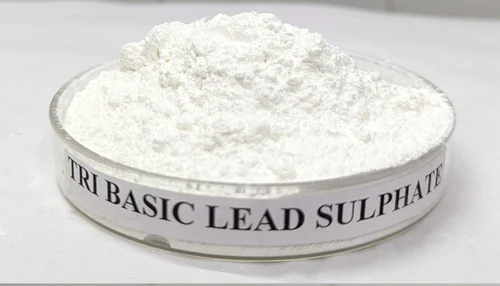
The synthesis of Tribasic Lead Sulphate involves a meticulous process to ensure purity and optical properties. One common method is the reaction between lead oxide (PbO) and lead sulfate (PbSO4) in the presence of water. This process results in the formation of the crystalline structure of TBLS, a crucial step in its production.
Properties of TBLS
Crystal Structure: TBLS exhibits a unique crystal structure, contributing to its stability and utility in different applications.
Solubility: It is sparingly soluble in water, a characteristic that influences its applications in various industries.
Density: The density of Tri Basic Lead Sulphate is a critical factor in its use in the manufacturing of certain materials.
Applications of Tribasic Lead Sulphate
TBLS finds applications in diverse industries owing to its unique properties. Here are some of the Tribasic Lead Sulphate Uses:
In the Paint Industry
TBLS serves as a key component in the formulation of certain types of paints. Its role in enhancing paint durability and providing corrosion resistance makes it a valuable additive.
Use in PVC Stabilization
The PVC industry benefits significantly from the addition of Tribasic Lead Sulfate as a stabilizer. It helps prevent the degradation of PVC, ensuring the longevity and quality of PVC-based products.
Importance in Battery Manufacturing
In the realm of battery production, TBLS plays a crucial role in enhancing battery performance. Its use as an additive contributes to the efficiency and longevity of certain types of batteries.
Other Industrial Applications
Beyond the mentioned industries, TBLS finds applications in the manufacturing of various products, including ceramics and certain types of glass. Hence, there are a lot of Tribasic Lead sulphate Manufacturers in India.
Environmental and Safety Considerations
While TBLS offers valuable properties for industrial use, it is essential to consider the environmental and safety aspects associated with its synthesis and applications. Proper handling and disposal measures are crucial to mitigate any potential environmental impact.
Future Trends and Innovations in TBLS Applications
As industries advance and technology evolves, ongoing research and innovations in Tribasic Lead Sulphate Applications are on the horizon. TBLS and Calcium Stearates Manufacturers and researchers alike are exploring novel ways to leverage the unique properties of TBLS for sustainable and groundbreaking solutions.
Green Chemistry Initiatives
The synthesis of TBLS traditionally involves certain chemical processes that may have environmental implications. However, ongoing research is focused on developing greener synthesis methods, aligning with the principles of green chemistry. This not only enhances the sustainability of TBLS production but also addresses environmental concerns.
Nanotechnology Integration
In recent years, the integration of TBLS into nanotechnology applications has gained attention. Researchers are exploring how the unique crystalline structure of TBLS can be harnessed at the nanoscale for applications ranging from advanced materials to medical technologies.
Global Market Dynamics for TBLS
Understanding the global market dynamics for TBLS is crucial for businesses operating in industries where TBLS is a key component. Market trends, supply chain dynamics, and emerging competitors all play a role in shaping the landscape.
Market Growth and Demand
The demand for TBLS is influenced by various factors, including the growth of end-use industries such as paints, PVC manufacturing, and batteries. Monitoring market trends helps businesses make informed decisions about production volumes and market positioning.
Competitive Landscape
With the increasing importance of TBLS in industrial processes, the competitive landscape is evolving. Businesses must stay competitive by continuously innovating and optimizing their processes for TBLS production.

